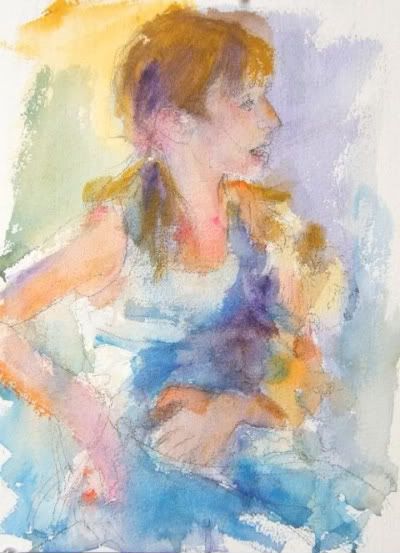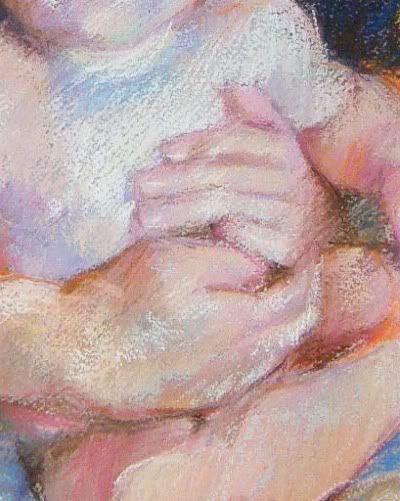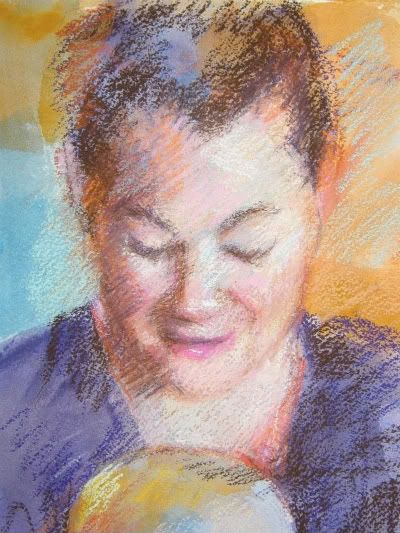On a trip to Prescott Arizona to visit the Mountain Artist's Guild where I will be giving a workshop on my pastel techniques, I spent part of the afternoon in a historic part of town where children in period dress, played with hoops and croquet mallets! A perfect opportunity to snap a lot of marvelous reference for some nifty paintings.
My girl, with her straw hat and golden hair, was walking out of the shadow of her porch into the sun drenched day.
The first order of business is to make a basic drawing which will help me understand the areas that will stay light and go dark. The "cartoon" is what they called it in the good old days, is the most basic of basic notes to myself as the artist. This drawing of notation is not as easy as it looks.
Many artists will grid up a drawing, using squares which one super-imposes on the reference to match LARGER squares on the drawing. It is a bite size chunk approach of making something big and complex, smaller and manageable.
Others use projectors, either old fashioned slides, small opaque projectors or other fancy tools.
Still others reprint the photo is sections to the exact size they will be drawing.... the TRICK is to make useful lines.
Some of my students will outline everything they can imagine. The key is imagine! Lots of what is in the reference is not actually visible. A real problem is often an eye, that will end up outlined and pupil and tear duct all shown, when the actual photo is merely lights and darks.
A really useful sketch should help you abstract the areas of light and dark, and let you sort o short hand your soft and hard edges. AS THE ARTIST, you should always... one of my pet peeves.... always have some idea when you start, how you will end. I tend to be a bit A.D.D. in things so when I start, I often skip way ahead and dive in quickly, but I will say, my very BEST work may not ACTUALLY have a color sketch or plan, but there are hours spent on my computer playing with values and colors before I pick the aspects of the picture I want to do.
So this final drawing was done, not directly from the picture, but from tracings to ELIMINATE things. The less detail in the underdrawing, the stronger the shapes and masses, the better it functions:
The lighter drawing done in vine charcoal, is reinforced with compressed charcoal. When I have played my strategy in my head of what I am going to do next, I spray it to secure it with a fixative. And as you know, there is a reason for this.
In this piece, I will use my underpainting to get a running start at some of those darks in the shadows behind. I am also not going to get too creative in my use of complements. I am going to use yellow in yellow and splashes of local color mostly to give a lot more vitality to the yellows of the picture.
The general look of the underpainting, which began with a sludge of all over burnt sienna left some of the white of the paper for the whites in the dress and just builds darker tones to start with.
Not a very pretty sight.... Glumps of color and pretty insipid. YOU are not the only ones anxious to see me put color in...
As much as I hate to break this up upside down again, I think it is best to publish as I go. I might finish it tonight, but more fun letting you read so far!
dj*




























